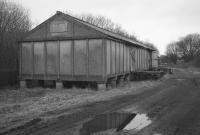Cleland and Midcalder Line (Caledonian Railway)
Introduction
This line is open. The line runs from Edinburgh to Glasgow via Shotts. Also known as The Shotts line. Opened in 1869. Very much undermined as an Edinburgh-Glasgow route until the line between Mossend and Uddingston opened in 1878.
Dates
Locations along the line
These locations are along the line.
This junction was formed in 1869 when the Cleland and Midcalder Line (Caledonian Railway) opened. It met the much older 1834 Wishaw and Coltness Railway Cleland branch here, built to serve collieries and the Omoa Iron Works (1789-1868).
...
See also
Wishaw and Coltness Railway
This siding was on the south side of the line, accessed from the west. By reversal a line south west to the site former Omoa Iron Works and on to Ravenshall Colliery Pits Nos 35 and 40 and Omoa Junction.
...
...
More detailsThis junction opened with the Cleland and Midcalder Line (Caledonian Railway) in 1869. It linked that line via a curve (the Drumbowie Branch) from west to north to meet the 1864 Salsburgh Branch (Caledonian Railway) at Langbyres Junction.
...
See also
Salsburgh Branch (Caledonian Railway)
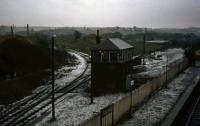
John Clark 04/01/1976
This is two platform station with a car park, footbridge and permanent way siding on its north side, approached from the east.
...
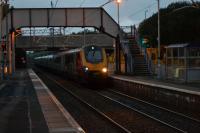
...
Iain Teaz 04/10/2018

...
Iain Teaz 27/09/2018
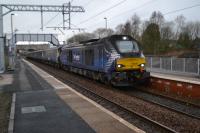
...
Iain Teaz 11/03/2019

Iain Teaz 27/09/2018
This is a ten arch double track masonry viaduct. It is east of Cleland station, formerly Omoa.
...
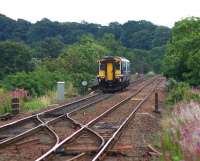
Colin McDonald 26/08/2016
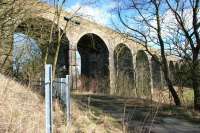
John Furnevel 20/03/2006
This signal box, east of Cleland Viaduct and station, controll access to Bellside Brick Works and Bellside Quarry.Later it gave access to Bellside Colliery.
...
This is a two platform station. It was opened in the countryside to the south east of Hartwood Hospital. A small village has grown around the station site.
...
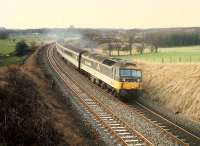
Ewan Crawford //1988

Ewan Crawford //1988
...
More detailsThis was the signal box for Curryside Colliery, to the south of the line and with a trailing siding approached by reversal from the west. The box was on the south side of the line by the connection.
...
This is a two platform station, the station for which the Cleland to Kirknewton line is known as the Shotts line. The station has a car park on its south side (westbound platform) and ramp access via a long bridge on its north side (eastbound platform). An original stone built station building survives on the westbound platform.
...

Colin McDonald 18/08/2017

Colin McDonald 03/08/2017

Colin McDonald 03/08/2017

Colin McDonald 31/08/2016
This signal box controlled the Caledonian Railway's access to the Shotts Iron Co's works railway from the Cleland and Midcalder Line (Caledonian Railway). The works opened in 1801.
...
This junction was between Shotts and Fauldhouse. From the junction a mineral line ran north to the Benhar Colliery and, latterly, north east to Polkemmet Colliery. Approach to the branch was from the west.
...
See also
Benhar Branch (Caledonian Railway)
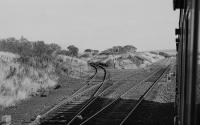
...
Bill Roberton //1986

William Barr //1978

Ewan Crawford //2000
This is a two platform station. There is a very small car park on the north side.
...
See also
Fauldhouse Moor Branch (William Dixon Ltd)
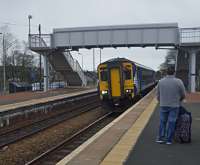
John Yellowlees 28/04/2016
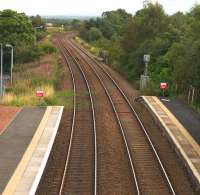
Colin McDonald 31/08/2016

David Panton 17/01/2019

David Panton //
This goods yard was east of Fauldhouse station. The goods yard was on the north side of the line and approached from the east. The yard consisted of sidings and a loading bank.
...
This is a double track viaduct east of Fauldhouse station.
...
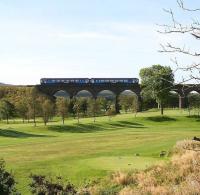
John Furnevel 15/09/2009
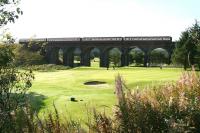
John Furnevel 15/09/2009
This junction was east of Fauldhouse station and Fauldhouse Viaduct. It was the junction for the Mouldron Branch (Caledonian Railway) (authorised as Cleland and Midcalder Railway No 4). The branch was on the south side of the main line and trains leaving the branch would head west.
...

John Furnevel 15/09/2009

Ewan Crawford 06/12/2003
This was the junction for the lime workings south east of Fauldhouse. (Nearby, to the west, was Mouldron Junction for the iron ore mines to the south of Fauldhouse.)
...
Breich is a two platform station on the former Caledonian Railway's Edinburgh and Glasgow line via Bellshill, Shotts and Kirknewton. The station formerly had a building, typical of the line, on the westbound platform. The station has relatively low platforms and an old footbridge. It is a very quiet station - often, in statistics, shown to have the fewest passengers in Scotland.
...
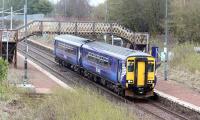
John Furnevel 26/04/2018

John Clark /01/1981
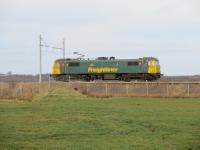
Gordon Steel 24/02/2019
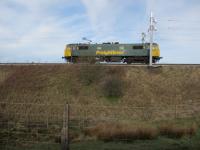
Gordon Steel 24/02/2019
This was a double junction. Two mineral lines began here:
...
See also
Woodmuir Colliery Branch (Caledonian Railway)
Addiewell Loop (Caledonian Railway)
This is a two platform station. It has a small car park on the north side.
...

Bill Roberton 11/04/2023

Bill Roberton 11/04/2023

John Yellowlees 11/04/2018
This signal box was located east of the present day Addiewell station. It was on the north side of the line at the point where the exchange sidings for Young's Paraffin Light and Mineral Oil Company's 1865 Addiewell Chemical Works, (a shale oil works) were located. These were on the north side of the line, approached from the east. Access into the works was by running to the west and ...
More detailsThis is a two platform station. A stone station building still stands on the westbound platform. This is the best preserved station building on the line. Mei Hua Platform is based in the station building. There is a car park south of the station. The goods shed remains at the west end of the station, south of the line, in other uses. The lattice ...
More details
Bill Roberton 21/04/2023

...
Bill Roberton 21/04/2023

Bill Roberton 21/04/2023

Bill Roberton 21/04/2023
This was the eastern end of the 1871 Addiewell Loop (Caledonian Railway) (or West Calder loop). The loop was on the north side of the 1869 Cleland and Midcalder Line (Caledonian Railway). Approach to the single track loop was from the east. There were several sidings in the 'V' of the junction. The signal box was on the north side of the junction. The loop was to serve several works and ...
More detailsSee also
Addiewell Loop (Caledonian Railway)
This was a two platform station on the Shotts line. There was a goods yard on its north side, approached from the east and a siding on the south side, east of the station, approached from the west. The signal box was a the east end of the westbound platform.
...
This is a modern minimal two platform station which opened in 1984 on an embankment. The station has a car park on the north side.
...

David Panton 09/09/2020

John Furnevel 16/04/2018

Bill Roberton 20/03/2023

David Panton 01/08/2019
This is a six arch double track viaduct.
...
...
More details
John Clark /03/1979
This signal box was west of Midcalder Junction and controlled the approach to the junction of both the Caledonian Railway main line from Carstairs and the Shotts line.
...
See also
Caledonian Railway
This is the junction between the Caledonian Railway's Carlisle to Edinburgh Princes Street main line of 1848 and its Edinburgh and Glasgow railway, via Shotts, of 1869.
...
See also
Caledonian Railway
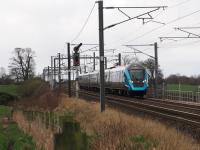
Duncan Ross 24/03/2023
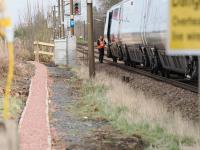
Duncan Ross 24/03/2023

Duncan Ross 24/03/2023

Malcolm Chattwood 26/02/2016














